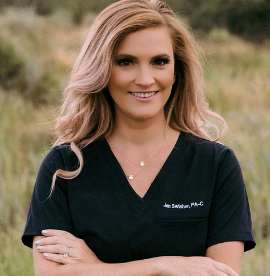How to Repair a Facial Laceration Like a Plastic Surgeon

Emergency medicine often puts us face-to-face with lacerations requiring precision and care. Dr. Justin Cohen's visit to ERcast, alongside Dr. Christina Shenvi, illuminated the path to handling facial lacerations with the finesse of a plastic surgeon. Here are key takeaways to elevate your emergency room responses.
Hard and Fast Consultation Criteria
Controversially, most plastic surgeons don’t consider lacerations emergencies and challenge the need for immediate repair. Plastic surgeons take into consideration proximity, patient preference, and provider comfort. While not all lacerations scream for a plastic surgeon's touch, there are clear signs when their expertise is non-negotiable:
- Severe trauma or extensive facial lacerations
- Facial fractures
- Vascular compromise or nerve injury
Optimizing Repair Techniques
The foundation of successful laceration repair is built on adhering to the basics. Here are the core principles essential for all types of laceration repairs.
🪡 Irrigate the wound to visualize what structures are involved
🪡 Ensure tetanus vaccination is up-to-date (consider rabies if applicable)
🪡 Choose the right suture material for your wound
🪡 Deep dermal layer sutures should bear the brunt of keeping a wound closed
🪡 The final layer of sutures closing the skin is primarily cosmetic
Can’t Fight This Feeling: Anesthetics
Dr. Cohen recommends using lidocaine with epinephrine and bupivacaine mix to anesthetize and prioritize field blocks when possible.
- 50:50 mix of lidocaine with epinephrine + bupivacaine: 5cc of 2 % lidocaine with epi or 1% lidocaine with epi + 5cc of 0.5% or 0.25% bupivacaine.
- Consider infraorbital or submental blocks for lip lacerations to avoid distorting the anatomy.
- You can put epinephrine in any part of the body safely without a dose limit.
- Epinephrine reversal: phentolamine (some people use it if they're anxious about a de-vascularized finger).
- The reality is without the vasoconstriction from epinephrine, it's hard to get a good repair (lidocaine is a natural vasodilator).
- The vasoconstrictive property of epinephrine may make the vermilion border less distinct, so ensure good alignment or mark it before using epinephrine locally.
The More You Know 🌈
- Facial lacerations can be repaired 24 hours post-injury (up to 48 hours in devastating cases, but edges may need to be freshened).
- Allow patients to shower within 24 hours, just no scrubbing over the repair.
- Hydrogen peroxide is your friend when removing dried, crusted blood matted in hair.
- For elderly patients with delicate skin, suture through a Steri-Strip™ to prevent tearing.

Photo Courtesy of @JayHineMD originally posted Dec 8, 2018 via X
Needle-ss to Say: Let's Bandage This Up 🩹
In emergency medicine, mastering the art of facial laceration repair is both a science and an art. By integrating the pearls of wisdom shared by plastic surgeon Dr. Cohen, emergency medicine providers can empower themselves, strengthen their relationships with on-call consultants, and enhance patient care. We hope this piece arms you with a nuanced understanding of repair techniques and suture materials, better equipping you to navigate the complexities of facial lacerations with confidence and skill.
If you feel this is the case, please share this with a friend or colleague!

Practice-Changing Education
Experience education that goes beyond theory. Explore Hippo Education’s offerings below.


